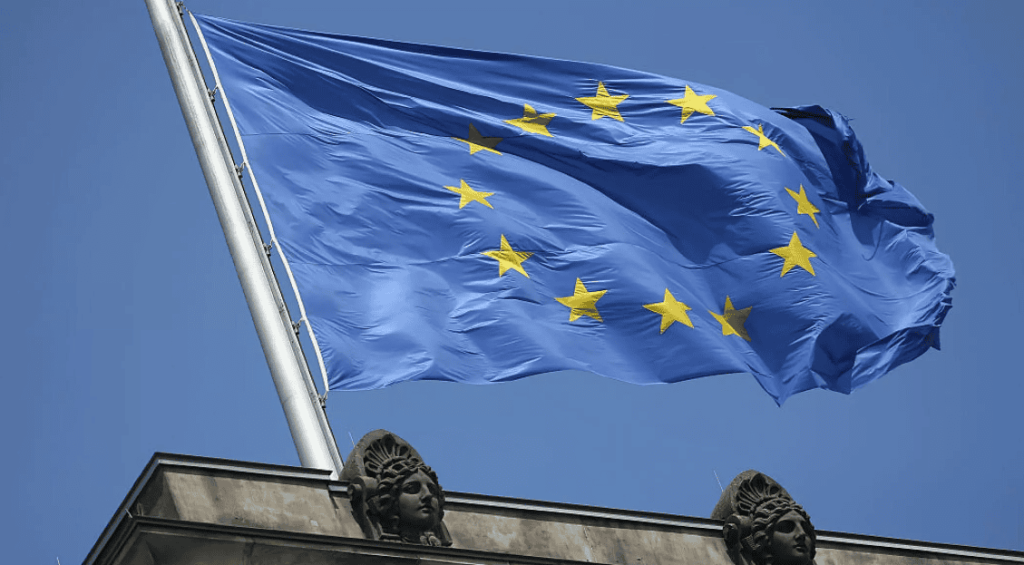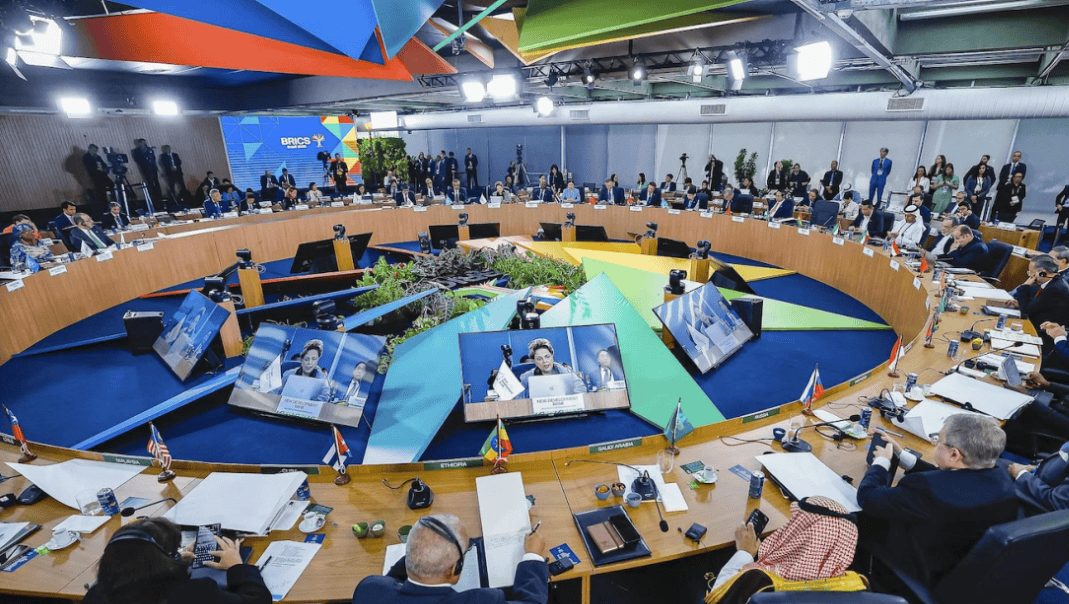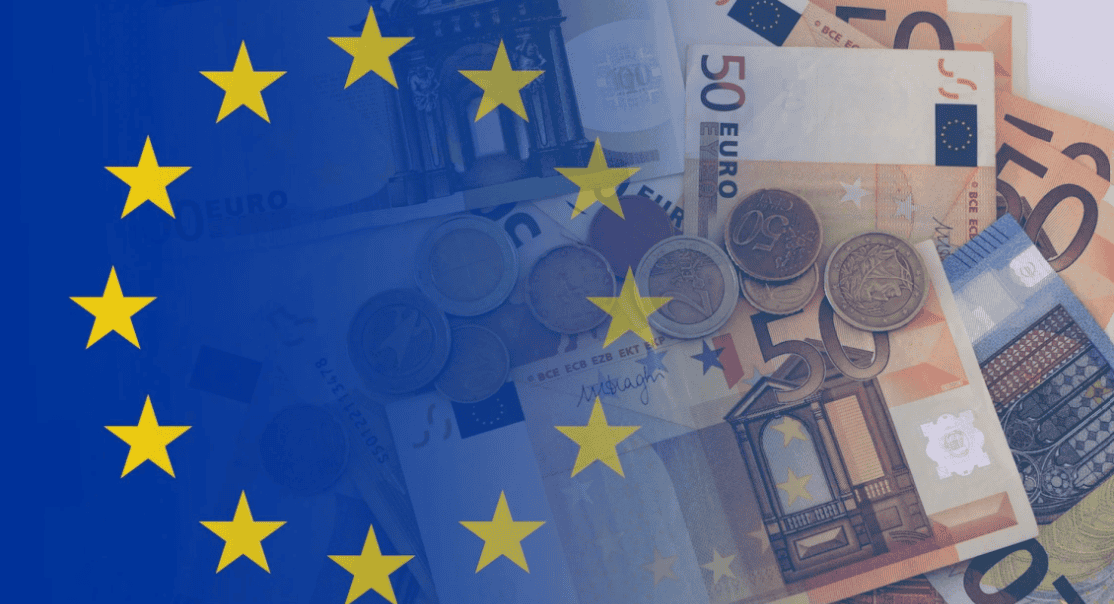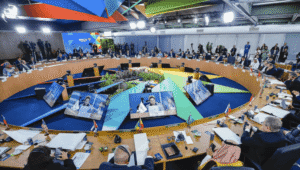Executive summary
The historical track record of centralisation of public expenditures at European Union level is patchy, and the prospects of agreement on future common spending are not good. However, Russia’s attack on Ukraine, NextGenerationEU, ensuring the stability of the euro and the climate crisis have been cited as justifying a further step-up in public spending at EU level. In recent years, the economic debate over the definition and provision of so-called European public goods (EPGs) has also revived and has put upfront the question of what to spend at EU level, based on an economic interpretation of where spending would be more efficient.
To provide a counterpart to the more abstract debate on EPGs, this paper analyses major discussions that have taken place since the beginning of European integration about increasing the EU’s fiscal capacity. It shows how heavily EU agreements on what public expenditure should be centralised have relied on political considerations, in addition to, or instead of, reasoning about economic efficiency.
These precedents should inform today’s discussions. In particular, it should be remembered that: (a) very specific historical and political contexts made proposals to centralise expenditure at EU level convincing and successful; (b) the notion of ‘fiscal federalism’ was and is occasionally invoked but rarely put into practice; (c) progress depends on clearly delineated issues; and (d) a political agreement on a ‘non-market definition of the common interest’ remains crucial to any change.
The author wishes to thank Zsolt Darvas, Stephen Gardner, Heather Grabbe, Ivo Maes, Lucio Pench, André Sapir and Nicolas Véron for their helpful comments on earlier versions of this paper, and Nicolas Boivin for excellent research assistance.
1 Introduction
The debate over European public goods (EPGs) has revived questions about how the European Union should spend its budget and what it should spend it on. EPGs are broadly defined as “policies and initiatives whose value to the citizens are higher when conducted at EU rather than at national level” (Fuest and Pisani-Ferry 2019). They cover broad policy areas, ranging from foreign policy and peace, to research and defence. Their identification and provision imply a set of complex economic assessments (Buti and Papaconstantinou, 2022; Claeys and Steinbach, 2024; Wyplosz, 2024).
Much EU spending, however, would not necessarily be classified as for the ‘public good’, as per economists’ definitions. For example, a large share of the EU budget has always been spent on the common agricultural policy (CAP), which is criticised regularly for being ill-designed in terms of economic efficiency. And while structural funds – spending on regional catching-up – just like some aspects of the CAP, may align with some EPGs, an EPG reasoning was not behind their establishment. Structural funds were originally designed as financial compensation for the disadvantages some regions faced in the context of the creation of the common market, and were intended to encourage their economic development across the EU.
The phrase ‘public goods’ has not always been common in European policymakers’ circles. While the debate in economics has long existed, the term ‘public goods’ in EU policymaking seems to have first been used in the late 1970s. An early instance was the MacDougall Report on the role of public finance in European integration (European Commission, 1977). Under the heading “supply of public goods and services, and regulatory activities,” the report identified three “criteria for assessing the case for or against Community level involvement in public sector spending,” including economies of scale, externalities/spillovers and political homogeneity.
Ten years later, Tommaso Padoa-Schioppa, then head of the Commission’s economic and financial affairs directorate-general, used the phrase in his Efficiency, Stability and Equity report published in 1987 (Padoa-Schioppa, 1987). This report is often considered a landmark because it offered the first comprehensive analysis of the European Economic Community’s strategy after the agreement on the Single European Act, which in the mid-1980s revised the EU’s founding treaties. Shortly after, Spanish economist Miguel Boyer also referred to public goods during the debates of the Delors Committee for the Study of Economic and Monetary Union, which drafted one of the major blueprints that would serve to create the euro. These occasional uses of the phrase were however followed by little concrete action, until the expression reappeared in the public debate through an initiative of the French and German governments in 2018-19 1 (Lamy and von Weizsäcker, 2018), which reignited interest in the topic.
Taking a broader view of public spending at European level, this paper analyses what arguments European policymakers have used in discussions about centralising public expenditures at EU level, and how this can inform ongoing debates.
2 Ideas on spending in common
Even if modest in total, public expenditure centralised at EU level (Figure 1) is allocated to several different fields (including social policy, cohesion policy, research and agriculture) and covers a number of instruments (including the European Social Fund, European Regional Development Fund and European Agricultural Guarantee Fund). Three intersecting factors – a Treaty commitment, the need to support the common/single market and the need to support Economic and Monetary Union (EMU) – explain why the idea to spend in common was put forward in the first place.
2.1 Initiatives linked to a Treaty commitment
The first common expenditures related to European integration were social and regional policies in the field of coal and steel. Created in 1951, the European Coal and Steel Community (ECSC), included several cases of public spending in common (Breuer, 2023). The ECSC Treaty developed a social and regional policy in the coal and steel sectors. One flagship scheme was the Fund for the Training and Resettlement of Workers. There was also spending related to social housing (Mechi, 1994). The ECSC Treaty also included the ability to borrow from international capital markets (Articles 49, 51, 54, 55). In 1958, the European Atomic Energy Community (Euratom) Treaty also included a provision on borrowing (Article 172), but the Treaty of Rome instituting the European Economic Community (EEC) did not.
The second policy area concerned with the transfer of public expenditure from the national to the European level was European-level public spending related to defence. Even if it was eventually not ratified (see section 2.1), the ECSC member states signed in 1952 a Treaty establishing a European Defence Community (EDC) “supranational in character, consisting of common institutions, common armed forces and a common budget” (European Defence Community Treaty 1952, Article 1 2 ). Title IV of the EDC Treaty detailed the financial provisions, including in relation to the drafting of this common budget. It should include “the annual expenditures necessary for the execution of common plans for armament, equipment, supply and infrastructure for a period of several fiscal years” and be established “in a common currency chosen by the Council by two-thirds majority” (Article 89). Expenditures would be decided by a two-thirds majority (Article 87). The contributions of the member states would be fixed by the Council in line with the procedures of the North Atlantic Treaty Organisation (NATO, Article 94).
Because of the failure of the EDC, the subsequent and more ambitious discussions for a federal-like organisation of Europe held in 1952-54 – the European Political Community (EPC) – also failed (Griffiths, 2000). The aim had been to situate the ECSC-EDC framework under the umbrella of one single Community, thereby placing the European-level budgetary capacity within a wider political and democratic framework.
Agriculture was next up. The largest share of EU expenditure (Figure 1), the CAP, resulted from the development of a Treaty of Rome provision after extended political negotiations in the first half of the 1960s (Ludlow, 2005; Knudsen, 2009). These Treaty provisions were much vaguer than those on the establishment of the customs union. They were much closer in their vagueness to those relating to transport and social policy, which later produced only modest results in terms of both policy and common EEC spending (Patel and Schot, 2011; Mechi, 2020).
Against this unfavourable backdrop, a combination of three political circumstances explains the creation of the CAP. First, the Dutch and the French governments, alongside the Commission, formed a strong coalition in favour of activating the Treaty of Rome’s clauses indicating the possibility to create a CAP. The Dutch government wanted to secure its exports, the French government wanted to protect its farmers and the Commission needed at least one large common policy to support its ambition to be leading a process towards a full European political federation. Second, the opponents of the creation of such a policy, or of some of its aspects – the German, Italian and United States governments – proved ineffective in making their voices heard and coordinating their opposition. Third, the CAP’s development was incremental, composed of successive negotiations throughout the 1960s, meaning that the later implications of early decisions were not fully evident from the start.
Figure 1: Distribution of the EEC/EU budget, 1958-2023

Source: Bruegel based on European Commission (2009) for the 1958-2006 and ‘EU spending and revenue 2021-2027’, https://commission.europa.eu/strategy-and-policy/eu-budget/long-term-eu-budget/2021-2027/spending-and-revenue_en. Note: Since the budgets are inconsistently labelled and structured, Figure 1 focuses on four broad categories that could be identified over the entire 1958-2023 period: (1) CAP traces expenditure on agricultural subsidies or transfers. For 1958-2008 specifically the ‘EAGGF Guarantee Section’ and the ‘EAGGF Guidance Section’; for 2007-2013 ‘Agriculture Markets’ excluding Fisheries/Rural Development/Life+; for 2014-2023 ‘EAGF’ was treated as the successor to the EAGGF. (2) EU Cohesion reflects the evolution of the term ‘cohesion’ as used by the EU. From 1958-2006 it is the sum of the variables ERDF, ESF and Cohesion. From 2007-2013 it also includes the employment-related subsidies under ‘Cohesion for Growth and Employment’. From 2014 onwards it includes a new range of funds for territorial and social cohesion like the Erasmus+, ESC, and ERRF. (3) Administration. (4) Other = total expenditure – CAP – cohesion – administration.
2.2 Supporting the common/single market
The second factor explaining the ambition to develop European-level public expenditure was the need to support the realisation of the common/single market. First, inspired by the ECSC experience, the creation of the common market enabled the extension of social and regional policies to sectors other than just coal and steel (Dumoulin, 2007; Varsori and Mechi, 2007). Whether through social policy or regional policy, the argument was that the free movement of goods, capital, people and services could create discrepancies across the EEC, favour some already highly developed regions and further weaken others.
The development of EEC social policy focused on the social implications of the creation of a common market, and centred on living and working conditions and vocational training. The Treaty of Rome provided for the first of the structural funds, the European Social Fund (ESF). This led to the creation in 1975 of the first two European agencies, the European Centre for the Development of Vocational Training (CEDEFOP) and the European Foundation for the Improvement of Living and Working Conditions (Eurofound).
The Treaty of Rome provided a vaguer basis for developing an EEC regional policy. The Treaty’s broad objective of “harmonious development” ignited discussions about developing financial instruments at EEC level that would help support this aim. The European Investment Bank (EIB), created by the Treaty of Rome, was already a step in that direction. The EIB aimed to support specific projects in order to compensate for the negative effects of increased competition that resulted from the establishment of the common market (Coppolaro, 2009; Coppolaro and Kavvadia, 2022). However, EIB investments resulted from borrowing on international capital markets rather than on new EEC own resources. Discussions on developing a regional policy centralised at EEC level therefore continued in the 1960s and 1970s, and eventually came to fruition with the creation of the European Regional Development Fund (ERDF) in 1975, and its subsequent expansion and redesign as the Cohesion Funds in the 1980s and 1990s (Bussière et al, 2014; Dujardin et al, 2019; Thyrard, 2023).
Second, the balance-of-payments problems of some member states were a crucial issue for the functioning of the common market. The oil shock in 1973 and the availability of new capital to tap into gave rise to debates between the Commission and member states in the first half of the 1970s on the need to develop the EEC’s borrowing capacity. This led to the creation of the Community Loan Mechanism (CLM) in 1975, enabling the EEC to borrow on international capital markets and loan to member states, which would then use this money to finance balance-of payments-deficits but not budgetary deficits (Horn et al, 2020).
Finally, much more recently, NextGenerationEU (NGEU) and the Support to mitigate Unemployment Risks in an Emergency (SURE) programme were adopted in response to the COVID-19 pandemic to support the economic recovery of EU countries (Fabbrini, 2023).
2.3 Supporting the functioning of Economic and Monetary Union
The third factor in development of common spending was the possible and actual development of a European Economic and Monetary Union (EMU). The EMU project added another economic argument for increasing public spending at European level, namely that national stabilisation mechanisms in a monetary union context may not suffice to weather economic shocks (Mourlon-Druol, 2025). Automatic stabilisers provided at European level should therefore be developed. With the start of the EMU debate in the 1960s, the previous policies that were being developed – social and regional policies, common borrowing – were thus occasionally put into a monetary union context. The creation of an ERDF in 1975 was, for instance, part of discussions about EMU following the 1970 Werner Report, which was the first EMU blueprint EEC heads of government agreed upon (Maes, 2024).
Some new proposals were put forward in that specific EMU context, including the creation of European unemployment benefit and the further development of the EEC’s borrowing capacity. In 1973, the Commission proposed the creation of a joint unemployment benefit fund as part of its Social Action Programme (European Commission, 1973). This was part of the Commission’s strategy for what was then the second step of EMU after the adoption of the Werner Report (Maes, 2007; James, 2012). While discussion of the idea continued in the 1970s and subsequently, it however did not materialise.
In 1977, the Commission seized the momentum created by the discussions about the creation of the European Monetary System (EMS) to tackle the question of developing further the EEC’s borrowing capacity (Mourlon-Druol, 2025). This resulted in an agreement to create the so-called New Community Instrument (NCI) in 1978, which changed the logic of EEC borrowing. It moved away from the idea of providing a mere balance-of-payments deficits facility (as with the CLM) to investment support in order to stimulate economic growth. Specific sectors were targeted, including energy, infrastructure and industries in the process of reconversion (European Commission, 1980). The NCI was renewed several times in the 1980s — in 1982 (NCI II), 1983 (NCI III) and 1987 (NCI IV) — with each time member states and EEC institutions agreeing on the conditions and overall borrowing ceilings. But member states, the Commission and the European Parliament always failed to agree on making it a permanent scheme. The total amounts were very small: the totality of NCI loans from 1978-1990 amounted to 1.7 percent of 1978-1990 EU expenditure, and 0.01 percent of 1978-1990 EU GNI. Figures 2 and 3 provide detail on the distribution and beneficiaries.
Finally, much more recently, the European Stability Mechanism (ESM) and the Single Resolution Fund (SRF) were part of the responses to the euro-area crisis (ESM, 2019; Véron, 2024).
Figure 2: Total distribution of NCI signed per tranche per country, 1978-1990

Source: Bruegel based on European Commission (1991). Note: NCI I was agreed in October 1978 for a ceiling amount of 1 billion ECU (Decision 78/870/EEC), NCI II in March 1982 for the same ceiling amount (Decision 82/169/EEC), NCI III in April 1983 for a ceiling amount of 3 billion ECU (Decision 83/200/EEC) and NCI IV in March 1987 for a ceiling amount of 0.75 billion ECU (Decision 87/182/EEC).
Figure 3: Total distribution of NCI signed per country, 1978-1990

Source: Bruegel based on European Commission (1991).
3 How are the spending debates of the past relevant today?
The context of each proposal and decision to increase, if very modestly, public spending at EU level has varied greatly across time. The challenges and the issues at stake have changed considerably and make strict comparisons difficult. While debates on how to increase public spending at EU level are unlikely to use the exact same arguments, they would however benefit from bearing in mind the following implications from past discussions.
3.1 Very specific historical contexts explain why arguments for common spending were – or were not – convincing.
There is no hard and fast rule explaining why public expenditure is centralised at EU level or not. However, economic efficiency is not always a justification that features prominently. What matters is understanding that all decisions resulted from very specific sets of political circumstances and dynamics.
In the circumstances of 2024, the 1952 decision to provide for a budget for European defence in the EDC Treaty is probably the first to invite comparison (Dwan, 2000; Ruane, 2000). This decision stemmed from the French government’s desire to embed German rearmament into a Western European framework in a Cold War world. The invasion of South Korea by North Korea in June 1950 increased the fear of the opening of another front, particularly in Europe. The rearmament of West Germany was thus needed to ensure the security of Western Europe. While the French population did not support that view, the French government realised that West German rearmament was somehow becoming inevitable.
For the French government, the best strategy was thus to take the initiative and Europeanise West German rearmament, instead of having the rearmament imposed in another context. To do that, the French government decided to follow the ECSC model and suggested a supranational framework, that is, the transfer of a competence to a non-national executive. Only such a scheme would be able to place a maximum number of constraints on West Germany. The French government acted under considerable time pressure, since the US government wanted West German rearmament by the end of 1951. To that end, the EDC Treaty had to include significant public spending at European level. The evolution of French domestic politics then prevented ratification of this Treaty. In short, French support for a common budget for European defence was less motivated by the provision of a European public good than by a desire to limit provision of defence at national level in West Germany.
In the same field of defence, the European Peace Facility (EPF) and the Neighbourhood, Development, International Cooperation Instrument (NDICI) were created in 2021 after a review of EU support to the African Peace and Security Architecture (APSA). The EPF and NDICI allow the EU to finance the development of its military operations abroad and deliver military aid to partner countries. Since 2022, the EPF has also been used to support Ukraine (Karjalainen and Mustasilta, 2023).
With respect to European regional policy, which later turned into cohesion policy, the first enlargement of the EEC in the early 1970s was an important trigger. Until then, regional policy had been discussed intensely – the Treaty of Rome famously provided for the “harmonious development” of the Community in its principles (Article 2) – but the Treaty base was too weak to support an increase in Community public spending on such a policy. Enlargement to the United Kingdom and Ireland meant that, from 1973, two more member states in addition to Italy argued for the development of an EEC regional policy. A third of EEC member states in favour meant the discussions were considerably facilitated, eventually leading to the creation of the ERDF in 1975.
The development of the EEC borrowing capacity also derived from a combination of specific circumstances (Horn et al, 2020; Mourlon-Druol, 2025). Unlike the ECSC and Euratom treaties, the Treaty of Rome creating the EEC did not provide for a borrowing capacity. Discussions about it appeared in the triple context of: (a) the availability of capital markets to tap into as a consequence of the oil crisis and oil-producing countries selling at higher prices and having more money to lend, (b) the realisation that the EEC’s triple A rating was underused, and (c) the need to find ways to fight the economic crisis of the 1970s by supporting economic investment. This triple context, notwithstanding the reluctance of some member states to develop such Community-level borrowing, enabled the creation of the NCI in 1978. Echoing such a context, the development of NGEU happened in the extraordinary context of the COVID-19 pandemic (Schelkle, 2021).
Finally, the creation of the European Research Council (ERC), a near-federal institution supporting European research, also benefited from specific circumstances. Discussions among European scholars and research organisations about the detrimental effect on European research of the absence of a clear European setting were not new. The political realisation of this and momentum built up in 2002 among European research ministers and the European Council, based on a political commitment to transform the EU economy into a ‘knowledge-based economy,’ made it possible to move further. The European Research Council Expert Group (ERCEG)’s report, published in 2003, identified the “economic, social and intellectual reasons” why an ERC should be set up (ERCEG, 2003). The report also set out how this could happen, highlighting the need to avoid “requirements for ‘juste retour’” – that is, the notion that member states receive back a share more or less equal to their financial contributions to the EU – and the need for the independence of the future ERC as a key factors for the development of its credibility. This materialised in the creation of a new institution, the ERC, and its accompanying executive arm, the ERC Executive Agency (ERCEA).
Most recently and significantly, NGEU was also created in very specific circumstances that made it possible to break several budgetary taboos about common EU borrowing. The management of the COVID-19 pandemic caused an economic crisis across the EU. After weeks of negotiations, the EU agreed in May 2020 on an aid package consisting of grants to member states. The Commission established a Recovery Fund and borrowed money on financial markets, up to €750 billion.
3.2 The notion of fiscal federalism is regularly invoked but rarely put into practice
Fiscal federalism has often been part of discussions among European policymakers. Most famously, the so-called MacDougall Report on the role of finance in European integration, published in 1977, argued that a significant increase in public expenditure at European level would be required as integration deepens (European Commission, 1977). The MacDougall Report distinguished between different steps in integration. During the “pre-federal integration stage,” the report argued that there were only specific budgetary needs, especially in regional and employment policy, and called for the EEC budget to be raised from 0.7 percent of Community GDP to 2 percent to 2.5 percent. But the report also sketched out more ambitious options and stated that “it is possible to conceive, presumably at some distant date, a Federation in Europe in which Federal public expenditure is around 20-25% of gross product as in the U.S.A. and the Federal Republic of Germany. An earlier stage would be a federation with a much smaller federal expenditure of the order of 5-7% of gross product, or roughly 7.5-10% if defence were included” (European Commission, 1977, pp. 14–15).
Of course, the materialisation of such a scenario was and still is difficult to imagine, and the MacDougall Report itself mostly set out a theoretical case. An earlier attempt at European federal spending was the EDC Treaty, mentioned above, which did not take effect as it was eventually not ratified. However, the overall institutional structure was federal in inspiration, and the six ECSC founding members did agree, in the first place, to sign a Treaty that included a near-federal budgetary capacity.
However, there is at least one example of supranational public spending at European level, which has been implemented and is widely considered a success. The institutional structure and spending of the ERC, mentioned above, makes it in essence a federal institution. ERC spending is not subject to strict national quotas and the emergence of the ERC allowed the development of a genuine European-level space for research (Veugelers and Baltensperger, 2019).
3.3 Progress depends on clearly delineated issues
A major difficulty with increasing public spending at EU level stems from the original lack of clarity in the EEC/EU Treaty. Tommaso Padoa-Schioppa, the former economic and financial affairs directorate-general head, made this point in his 1987 report Efficiency, Stability, Equity (Padoa-Schioppa, 1987). Taking stock of the evolution of the Community system just as the single market and the liberalisation of capital movements were underway, the Padoa-Schioppa report noted that:
“the Community’s scope for economic action and successful development is, rather paradoxically, limited by the strictly economic nature of the Community itself. This is because the Community, unlike fuller political systems, is not responsible for the provision of essential “public goods” such as defence, justice, and social security, with the important economic consequence that distributive issues become more acute owing to the need to balance costs and benefits for members in more narrow terms than in a complete political system.”
The combination of the absence of very detailed provisions and the existence of some vague Treaty-based aims means that any additional public spending – rather than ‘public goods’ narrowly speaking – needs a very specific target and argument if it is to materialise. In the case of social policy, the creation of a European Social Fund was provided for in the Treaty of Rome, but without details about its resources and actions. In the case of agriculture, the political effort to create the CAP was made easier by the explicit provision included in the Treaty of Rome, but also relied heavily on the specific coalition of political forces in the early 1960s. In the case of regional policy, the Treaty of Rome called in principle for the “harmonious development” of the Community but provided only a weak basis for the supporters of regional policy in the early days of the EEC, explaining its slow genesis, from the first mentions in the early 1960s to the eventual creation of the ERDF in 1975. Attempts at increasing public spending at EU level therefore worked when it was very well targeted, or after a careful effort to define it more clearly.
Conversely, several issues regarding the definition of key concepts, needed in order to agree on additional European level public spending, hampered or delayed technical and political agreements. For more than a decade, regional policy could not develop because of the difficulty in agreeing on how regions should be defined and what criteria could be used to support them. Similarly, the ambition to develop financial support for the development of European infrastructures was held back by the inability to define what ‘infrastructures’ were. Finally, in the field of social policy, differences in social security systems and their definitions and aims often hampered progress.
In that context, the emergence of the ‘EPG’ expression seems to have been a symptom of the difficulty in defining and deciding on what to spend in common. The phrase ‘public goods’ very rarely appeared, if at all, in European policymakers’ debates before the 1977 MacDougall Report and the 1987 Padoa-Schioppa Report. In the late 2010s, wary that Brexit may impede European integration, the French and German governments launched a debate on EPGs, commissioning a report on the topic (Fuest and Pisani-Ferry, 2019). The debate on EPGs has developed since then and, importantly, has raised again the issue of clearly defining what public spending would be better carried out at European level rather than national level (Claeys and Steinbach, 2024).
3.4 The importance of agreeing on a ‘non-market definition of the common interest’
Examples of agreements to increase public spending at European level always had to confront the issue of the narrow cost-benefit analysis carried out by each member state (Breuer, 2024). This sort of calculation is as old as European integration. Each state looks at how much it pays to ‘Europe’ and how much it gets back from ‘Europe’. Latent in the early years, it came into the open with the discussion of the British budgetary question from 1979, and became institutionalised with the specific agreements reached from the 1980s on the contributions of the UK, Germany and the Netherlands, followed later by Austria and Sweden (Darvas, 2019; Ludlow, 2020). Since the 1980s, this debate has been dubbed the juste retour.
Such a logic is detrimental to the development of genuine European-level public spending in the spirit of the preamble and principles of the Treaty of Rome (1957). By nature, such public expenditure may benefit some more than others, and some may contribute more than others. As head of the Commission department on economic and financial affairs, Padoa-Schioppa (1981) illustrated well the inherent problems with the juste retour logic. Writing on 4 May 1981 to commissioner for economic and financial affairs François-Xavier Ortoli about the ongoing British budgetary discussion, he warned:
“I consider this kind of calculation to be extremely dangerous politically and, in the final analysis, impossible economically. (…) Politically, it simply means the end of the Community based on a non-market notion of the common interest (…) Technically, a complete calculation is impossible because it involves both the quantification of elements which, while being economic, are not quantifiable (stimulation of economic initiative, encouragement of rationalisation, enrichment of industrial culture, etc.) and the translation into economic terms of elements of another nature (increased political weight, stabilisation of the international framework, etc.)” 3 .
The development of regional policy after the creation of the ERDF provides a good illustration of these problems. Regional policy originally developed as a system of national quotas, with each member state allocated a fixed quota, as opposed to a system of allocation corresponding to regions that would need the most financial support, regardless of whether they belonged to a specific member state. Aware of this issue, some European policymakers – in the European Commission and some members states – aimed to develop a so-called non-quota section (Bonatesta, 2020). This section of the ERDF would be allocated regardless of the member state where the region was located. Developing it proved incredibly complex and of modest scope, totalling under 10 percent of the total ERDF expenditures in the first half of the 1980s. Richer member states, who contributed most to the budget, strongly opposed such developments, driven by the logic of juste retour.
A narrow interpretation of the principle of subsidiarity in the 1980s and 1990s reinforced this dynamic. Spanish economist Miguel Boyer explained this during the 1988-1989 debates of the Delors Committee that drafted a report on the creation of EMU, by saying that “economic union means liberalisation of markets and a minimum degree of intervention in order to supply public service. Here we have the principle of subsidiarity again, the level of public goods which each one feels he has to offer is limited as far as the Community is concerned, the decision is left to each one for his own country” 4 . The assumption (rather than demonstration) was that public spending would be better implemented at national level rather than EU level. Political considerations, not just economic ones, contributed the answer to the question of what public expenditure should be centralised. This materialised in the very modest space attributed to the increase in public expenditure at EU level included in the final Delors Report (Committee for the Study of Economic and Monetary Union, 1989; Maes, 2024). The logic of subsidiarity remained present after the euro was created, and discussion of EPGs reflects a desire to reconsider it.
4 Conclusions
The debate about EPGs revisits the logic of past decisions on common spending at EU level. In the past, political agreements reached in specific circumstances, rather than carefully crafted economic reasoning about the efficiency of spending at national or European level, explained most decisions to spend in common. However, highlighting that economic efficiency was generally not at the heart of decisions to increase common spending at EEC/EU level does not mean that economic concerns were altogether absent from the motivations. Some common spending certainly followed what could be described as an economic argument, including supporting the common market and supporting EMU.
But overall, a rational calculation about efficiency has not been the prime mover in these discussions. Instead, political bargaining that gave birth to what economists see as non-optimal choices has often prevailed. A better realisation of these limits in the reflection on what decisions are taken about common spending could allow greater realism in the debate about future common EU spending.
Source : Bruegel



































































